by Alessandra Ressa
Among the many wonders beneath Trieste is the Lower Stena tunnel, a hidden gem in the heart of the Longera neighborhood that has remained a well-preserved secret for over 250 years. Built during the Austro-Hungarian Empire, amidst the Napoleonic invasions, it is commonly known as one of the “French tunnels.”
It was intended to be part of the extensive network of tunnels comprising the Theresian aqueduct. This now forgotten underground passage was designed to provide the city with fresh, crystal-clear water naturally filtered and collected from rains and underground streams. Like several other structures in the areas of Longera and San Giovanni, these works were either interrupted or abandoned.
They soon fell into oblivion and were reclaimed by nature, as in the case of the nearby Upper Stena tunnel, now polluted and crumbling. Approximately 100 meters long, Lower Stena runs under the hill of Bosco del Farneto, next to the Farneto stream. It is not only difficult to find but even more challenging to enter. Over two centuries of abandonment have caused the rock preserving its entrance to accumulate layer upon layer of calcitic strata. It is estimated that in a few years it will become inaccessible.
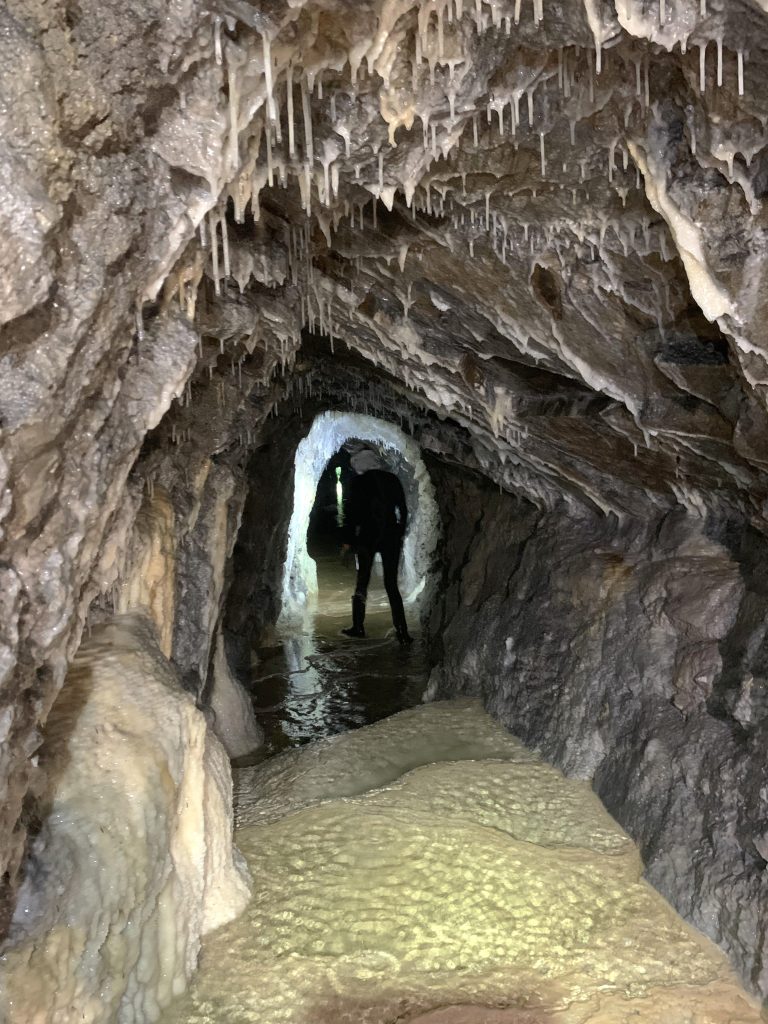
It was a very special birthday present from my caving partners Paola and Elena when, after we emerged from a Carso cave during our monthly Chicks in Caves outing, completely covered in mud and sweat, they announced they would take me there. “The water inside the tunnel is so clear,” explained Paola, “and the white formations so pristine that we have to wear clean clothes and boots.”
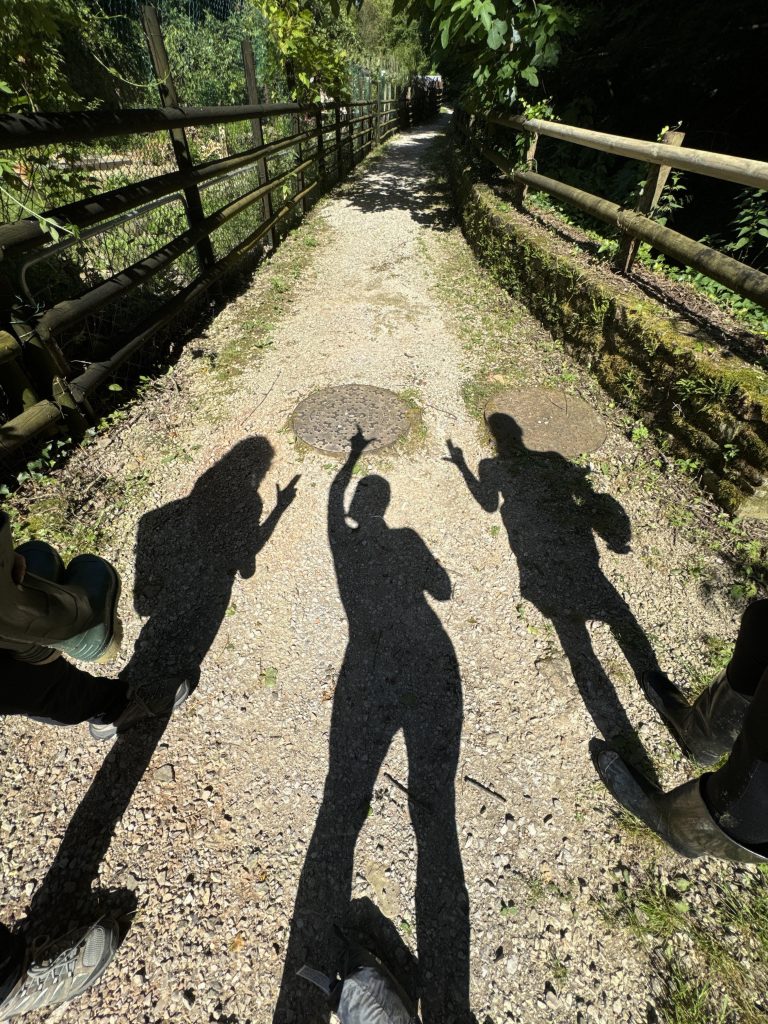
We changed into clean outfits, and I was given the honor of being the first to set foot inside. Struggling to get in – the entrance is really as narrow as it appears – I switched on the light of my helmet while trying to ignore the huge spiders standing guard. What I saw made me forget that I was suddenly in freezing water up to my thighs. Frozen in time, a long, dark tunnel lay ahead of me, with crystal-clear waters reflecting the light of my helmet, a brick-vaulted ceiling, and walls leading to the unknown. Definitely my kind of place. Further down, the aquamarine waters turned suddenly white, revealing a world with no colors, covered in white sparkling formations. Not a cave, but it looked like paradise to me.
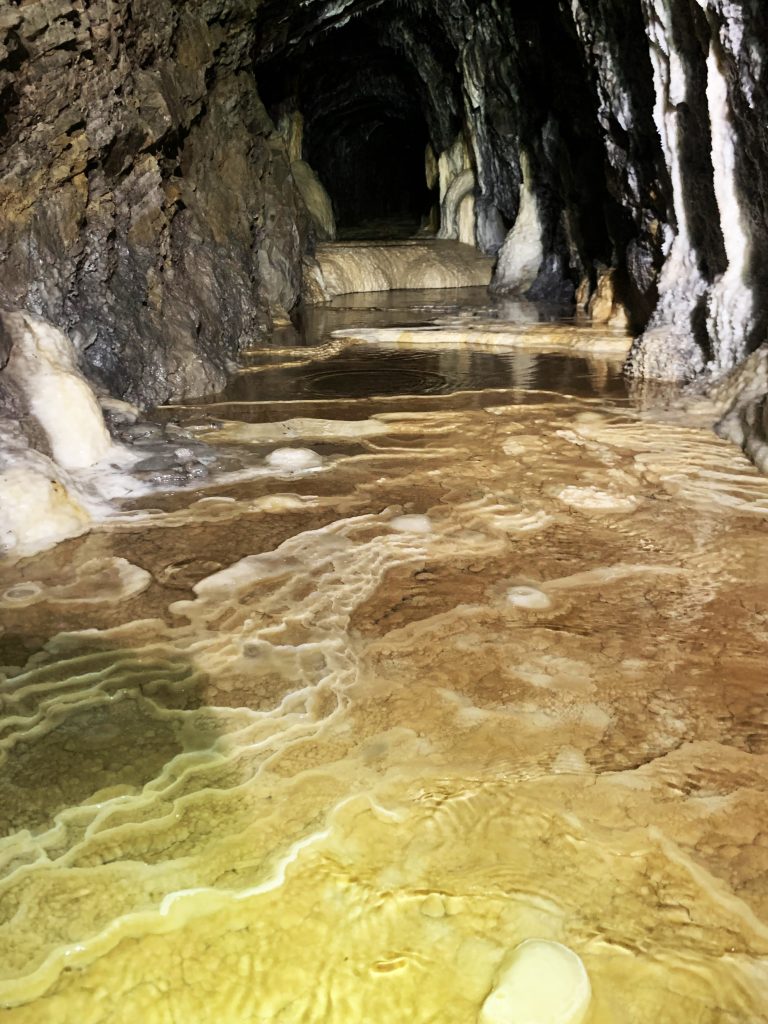
Threading carefully, trying not to touch or step on anything that appeared so beautiful and fragile, I felt tears running down my cheeks. How could this place exist, I kept wondering, while admiring the unique, elegant, and blinding white calcitic rock formations everywhere. Stalactites hung from the ceiling, and on the walls, what appeared to be hundreds of miniature waterfalls turned into ice and snow glowed back in their absolute whiteness. Under the clear waters, step-like natural tanks preserved pools of shiny and intricate formations that looked like silk lace. We tried to minimize conversation, not just to preserve the magic of the moment, but to avoid swallowing the thousands of flying bugs disturbed by our presence.
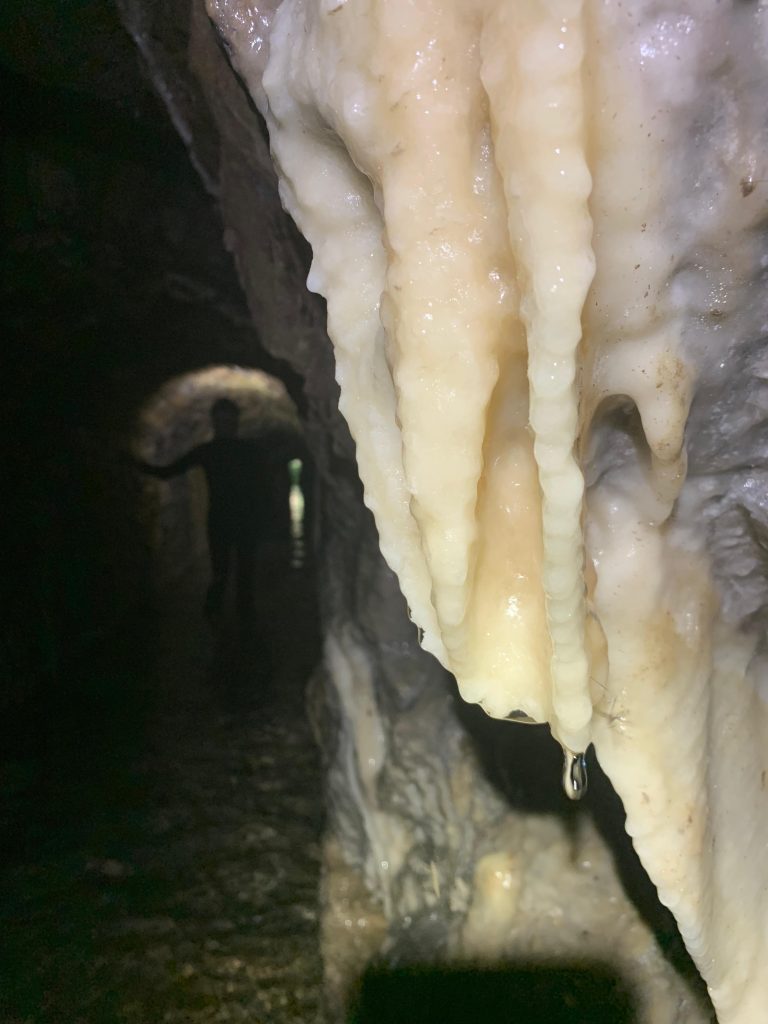
Towards the end of the tunnel, the water turned into mud, a sight so familiar to the three of us. As members of the Teresiano special squad of the Società Adriatica di Speleologia, who have been digging out the mud from the main Theresian aqueduct of San Giovanni for years, it almost felt like home. “It’s like the Teresiano!” I commented, “except for the smell.” And this was true. Not only did the Lower Stena engulf us in a dreamy world of candor, but it also smelled of cleanliness, something you usually experience at high altitudes on a mountain top.
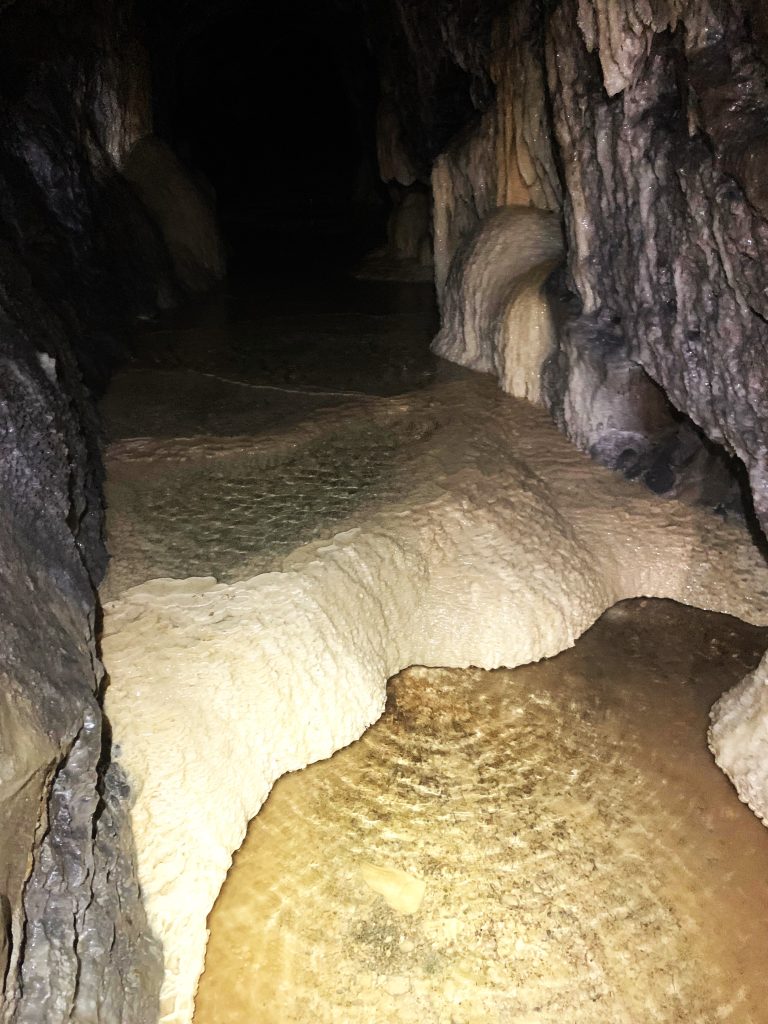
The tunnel ended almost as suddenly as it began. The section dug into rock simply stopped. It was time to go back to avoid hypothermia. Again, we tried to leave little trace of our passage until we saw the narrow, bright hole in the distance, indicating that the fun was over.
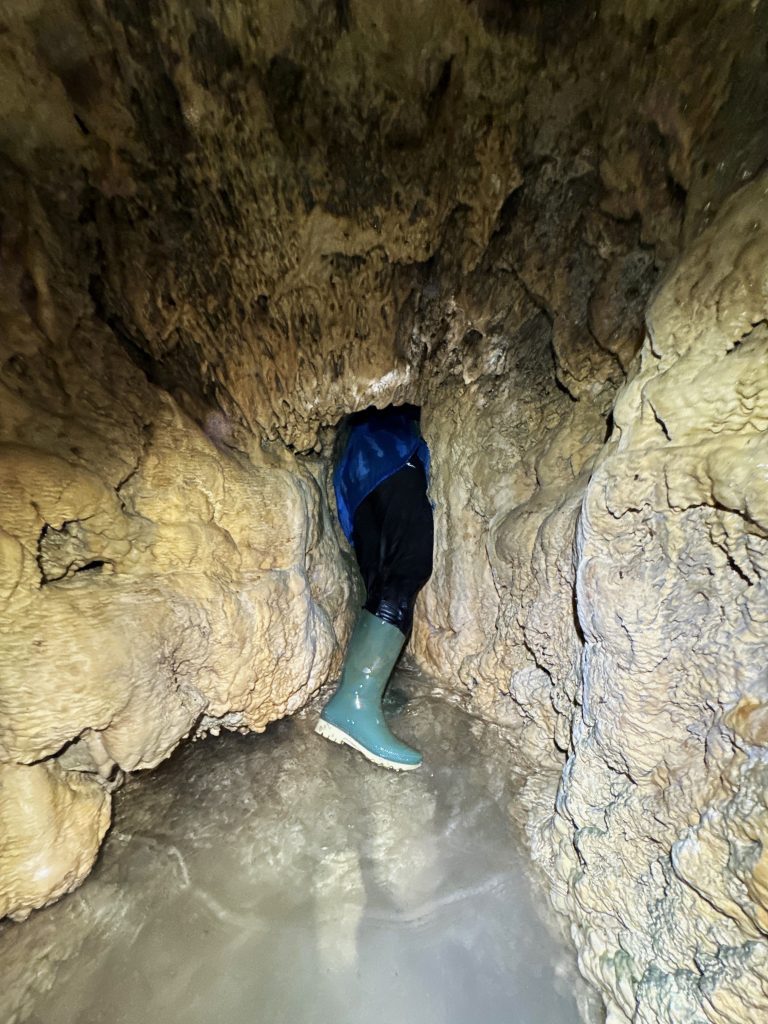
The Lower Stena tunnel was explored and mapped for the first time by Società Adriatica di Speleologia in 1984. Since then, little has been disclosed about its exact location to preserve it from pollution and vandalism. Thanks to the sensitivity of those early explorers, it has so far remained uncontaminated and pure. In a matter of years, the little hole that is now the entrance will seal, and the beauty that lies within will be hidden forever.




























